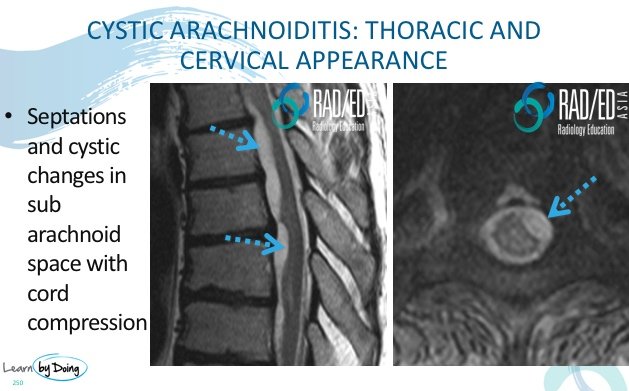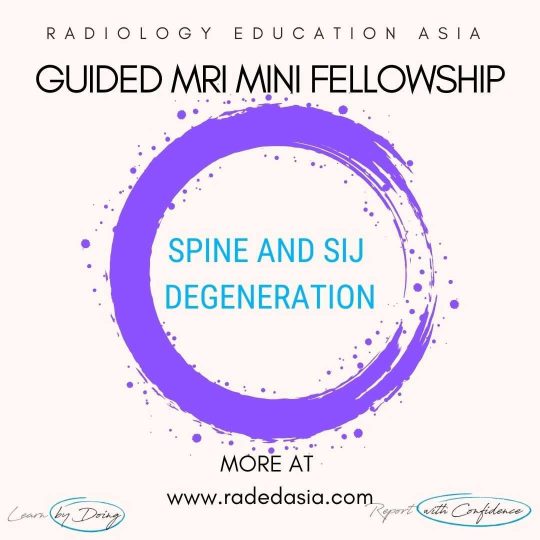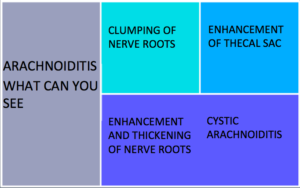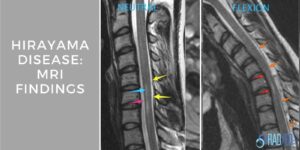
CORD OEDEMA FROM CYSTIC ARACHNOIDITIS
Spinal arachnoiditis can have various appearances. One of the more severe forms, cystic arachnoiditis, can result in cord signal abnormality which can be very extensive. This post looks at why cord oedema develops in cystic arachnoiditis and its MRI appearance.
- Normally there is two way flow of CSF between the central canal/ cord and the subarachnoid space and vice versa. Overall net flow is into the cord.
- Arachnoiditis can result in septations, intra dural arachnoid cyst formation and tethering of the cord.
- Cord tethering and septations can result in abnormal CSF flow dynamics with net increase in fluid and interstitial pressure in the cord which can lead to syrinx formation, cord oedema or both.
- Cord oedema and syrinx formation may begin at the level of the septation or cyst but can be extend quite distant to them.




Cord tethering is the attachment of the spinal cord to the surrounding tissues, which can occur due to the formation of septations or arachnoid cysts. This can contribute to abnormal CSF flow and lead to syrinx formation, cord oedema, or both.


We look at all of these topics in more detail in our SPINE MRI Mini Fellowships.
Click on the image below for more information.
- Join our WhatsApp Group for regular educational posts. Message “JOIN GROUP” to +6594882623 (your name and number remain private and cannot be seen by others).
- Get our weekly email with all our educational posts: https://bit.ly/whathappendthisweek
#radiology #radedasia #mri #spinemri #radiologyeducation #radiologycases #radiologist #radiologycme #radiologycpd #medicalimaging #imaging #radcme #rheumatology #arthritis #rheumatologist #orthopaedic #painphysician #chiropractic #chiropracter #physiotherapy #sportsmed #orthopaedic #ankylosingspondylitis #spondyloarthropathy #arachnoiditis #cord #oedema #cysticarachnoiditis #csf










